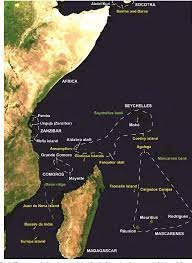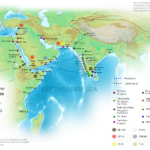The Indian Ocean, an expansive body of water that spans between Africa, Asia, Australia, and the Middle East, stands as a remarkable testament to the wonders of marine life. Teeming with an extraordinary diversity of species, it has rightfully earned the reputation of being a biodiversity hotspot. This article aims to take you on a captivating journey through this aquatic paradise, shedding light on its exceptional ecosystems, the plight of endangered species, and the pressing need for conservation.
At the heart of the Indian Ocean’s enchantment lies its vibrant coral reefs. These underwater metropolises, adorned with a kaleidoscope of colors, support an intricate web of life. Among the most celebrated reefs is the Great Barrier Reef, off the coast of Australia. Its sprawling beauty mesmerizes divers, who encounter a breathtaking mosaic of coral formations and encounter a myriad of fish species, including the iconic clownfish. However, these reefs face unprecedented threats, such as coral bleaching caused by rising water temperatures and pollution. Urgent conservation efforts are essential to safeguard these invaluable ecosystems.
While coral reefs dazzle with their stunning beauty, the Indian Ocean is also home to an astonishing variety of marine mammals. The graceful humpback whales embark on their annual migration, covering vast distances between their breeding grounds and feeding areas. These gentle giants, known for their captivating songs and acrobatic displays, are a symbol of the ocean’s magnificence. Yet, they are increasingly vulnerable to entanglement in fishing gear and the disruption caused by human activities, endangering their survival. Protecting these marine mammals and their habitats must be a priority for conservationists.
Beyond the coral reefs and marine mammals, the Indian Ocean boasts an impressive array of biodiversity. From tiny seahorses to majestic sea turtles, the region is a haven for countless species. The Maldives, an archipelago nestled in the Indian Ocean, presents a unique spectacle with its manta ray cleaning stations. These gentle giants congregate at specific sites, allowing cleaner fish to remove parasites from their bodies—an extraordinary example of symbiotic relationships in nature. However, overfishing and destructive fishing practices threaten the delicate balance of these ecosystems, underscoring the need for sustainable fishing practices and marine protected areas.
While the Indian Ocean’s allure is undeniable, it faces numerous challenges that imperil its rich biodiversity. Climate change looms as one of the greatest threats, with rising sea temperatures and ocean acidification wreaking havoc on marine life. Additionally, pollution from coastal development, oil spills, and plastic waste further degrades the health of the ocean. It is imperative for governments, organizations, and individuals to collaborate in preserving the Indian Ocean’s natural treasures.
Conservation efforts in the Indian Ocean have gained momentum in recent years. Countries in the region have recognized the significance of marine protection and have established marine reserves and national parks to safeguard critical habitats. Research initiatives and public awareness campaigns are shedding light on the importance of responsible tourism and sustainable practices. By promoting eco-friendly approaches, we can minimize our ecological footprint and contribute to the preservation of this biodiversity hotspot.
The Indian Ocean beckons explorers and conservationists alike to delve into its depths and witness the extraordinary wonders it holds. From its dazzling coral reefs to its captivating marine mammals and diverse marine life, this vast expanse of water is a testament to the beauty and fragility of our planet’s ecosystems. Through concerted efforts and a shared commitment to conservation, we can ensure that future generations can continue to marvel at the magnificence of the Indian Ocean’s biodiversity.




